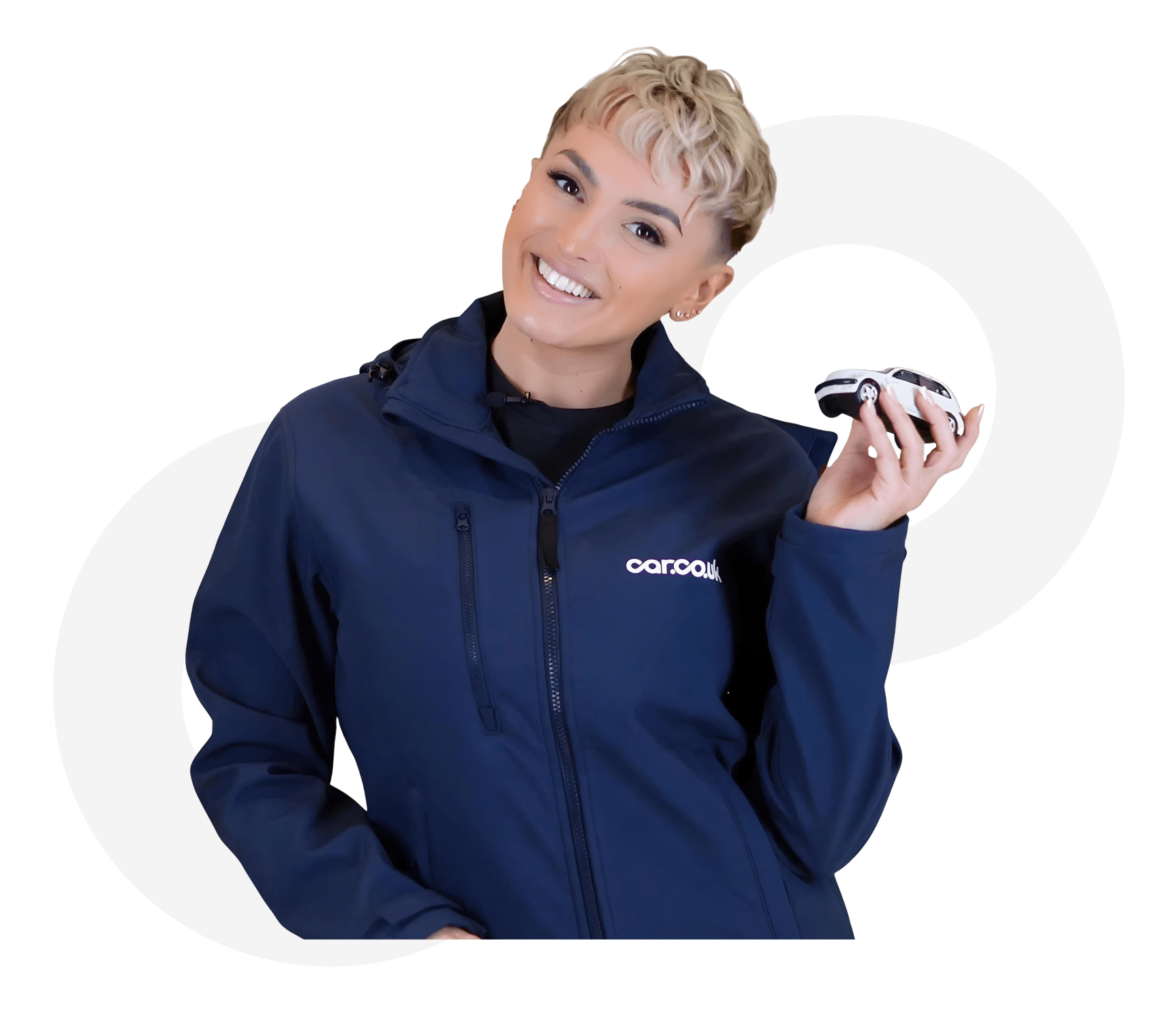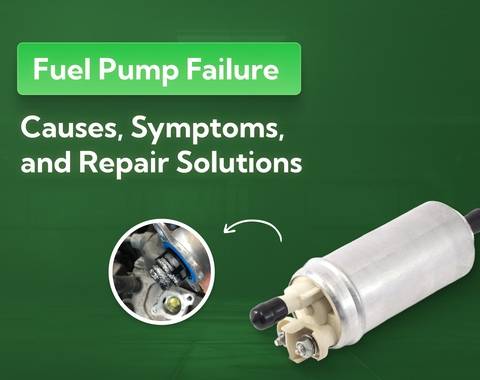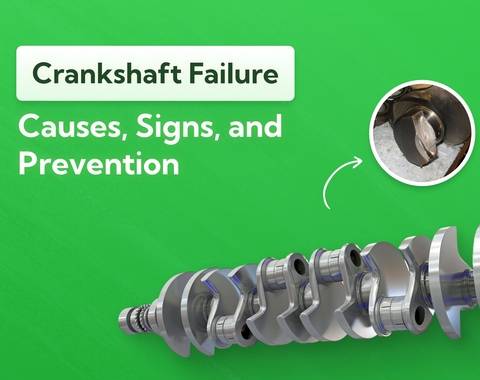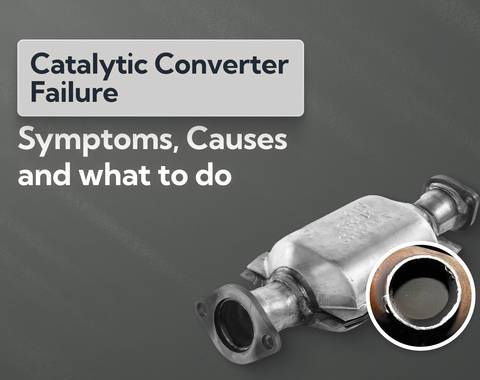How to Sell a Leased Car in 10 Easy Steps
Millions of Britons lease cars. If you're one of them and you find yourself in the market for a different one (or you just want to get rid of it), you might wonder what your options are. The good news is you can still sell your car just like everyone else. There are, however, a few strings attached.
Last updated: 13th October, 2025

Award-winning CEO driving growth and social impact across automotive, recycling, and technology-led enterprise platforms.

Listen to this story
Roughly 1.6 million UK residents lease their cars. Every year, between 20% and 30% of all new cars are leased rather than financed or purchased outright.
And in life, things happen. Sometimes, people move. Others, interests change.
Since we can't predict the future, two to four years is a long commitment.
The good news is that selling a leased car is like selling a car on finance — that is, you can totally do it. You do, however, need to take a few extra preliminary steps.
What's in this article
- 1. Selling a Leased Car: A Quick Look
- 2. The Step-by-Step Process
- 2.1 Review the Lease Agreement to Know Your Options
- 2.2 Determine the Car's Current Market Value
- 2.3 Finalize the Sale with the Lessor
- 2.4 Register as Owner in the V5C Logbook
- 2.5 Prepare the Car for Sale
- 2.6 Advertise the Car for Sale
- 2.7 Negotiate with Potential Buyers
- 2.8 Complete the Necessary Paperwork
- 2.9 Transfer the Ownership to Your Buyer
- 3. Should I buy my leased car and sell it?
Selling a Leased Car: A Quick Look
If you don't own the car, how on Earth can you sell it?
That's just it. You can't sell a car you don't own.
When you sell your car, you'll use your V5C logbook to transfer ownership. Although the document will indicate you are the registered keeper, it's the leasing company that owns it. So it's impossible to carry out the regular sale process while your car is still under lease.
If you want to get rid of your car, you have three options:
- Transfer the lease to someone else (if your lease agreement permits)
- Return the car, pay an early termination fee and end your lease
- Buy the car from the leasing company and sell it
If you can't (or don't want to) transfer your lease but you need to get rid of the car, you're already operating at a loss. Between fees, penalties and depreciation costs, you'll just have to accept it.
Remember: When getting rid of your leased car, you won't typically "benefit" from the transaction. Since you'll have to buy the car outright first, you'll almost always sell at a net loss (and spend a lot more time doing it).
The Step-by-Step Process
Like we said, selling a leased vehicle is similar to selling one you financed. You'll have to sort your arrangements with the leasing company and transfer ownership to your name before you can move along.
It's worth noting that most people choose to end the lease early and bite the bullet because it entails much fewer hoops than selling it. Between forking over the money, handling all the ownership transfer paperwork and physically finding a new buyer, you'll have a lot on your plate.
It's much easier to pay the fee to end the lease, give the car back to the dealer and either get a new one or move on with your life (which you'll have to do anyway).
If you do decide to sell your car online, to a friend or back to the dealer after buying back your lease, here's how:
Review the Lease Agreement to Know Your Options
Leasing is basically a long-term rental agreement. You'll need to make a down payment and successive monthly payments. In return, you get to own the car for X years.
Many finance companies that offer leasing contracts customers won't allow you to purchase the vehicle. Instead, your terms are probably structured for you to return the car at the end of your lease and move on.
Before selling your leased car, you'll need to check your lease agreement. Check the following points:
- If you can buy the car out (most important)
- How to buy the car out
- Early termination clause and fees
- Buyout price for early termination
If your leasing company does allow you to buy the vehicle, it normally works like this:
- You get a buyout price you can put toward the end of your agreement.
- You'll pay the difference between the buyout price and what you would owe in monthly payments until your agreement ends.
- The leasing company will give you an early termination fee on top of that.
If the contracting company doesn't allow for this, unfortunately, you'll have no other option but to cancel your lease early or keep it for the remainder of the contract.
Determine the Car's Current Market Value
Once you move past the critical first step, you can evaluate the car's worth.
The value you'll be able to sell it for depends on its condition, make/model, mileage and in-demandness. Since it's leased, it's relatively new. You should be able to fetch a bit more for it since the mileage is probably low. Plus, it's probably a model others would buy.
To understand its current market value, use our free car valuation calculator to get a roundabout estimate. Cross-reference this with what other cars sell for on used car sites and marketplaces.
Then, based on any damage, you can subtract from the estimation accordingly when pricing your car for sale.
Finalize the Sale with the Lessor
If you know your car's worth, you can decide whether selling is the best option for you. Going forward, you'll have to work with your lessor to jump through the hoops.
First, you'll need to pay off the car. Depending on the type of new car you leased, this could be anywhere from £12,000 to £40,000 for most vehicles.
If you don't have enough cash upfront, that's your first step. We strongly advise against taking out a loan just to buy your car from the lessor when you could easily terminate your lease instead.
Register as Owner in the V5C Logbook
Part of taking ownership is transferring it from the leasing company to your name. You'll need to complete the relevant sections of your V5C logbook and submit them all.
You will also have to send over a copy of your driver's license and a form of payment (normally, you'd transfer funds directly).
Once the leasing company processes the paperwork, they will send it back to you with their stamp or seal confirming the ownership transfer.
Prepare the Car for Sale
Regardless of its market value, you'll get a higher price when you make your car appear more valuable.
To prepare your car for sale, take the following steps:
- Take it to a professional mechanic for an inspection and repairs if necessary.
- Clean your car inside and out.
- Get it detailed (best £200 you'll ever spend).
- Paint over scratches and fix dents on the bodywork.
- Touch up the interior with accessories like seat covers or new mats.
- Get the car serviced and replace old parts like tyres, brakes and oil filters if necessary.
The most important step here is to clean it and have it detailed. You won't necessarily have to fix your car up if the damage is too extensive. Take it to a mechanic and see what needs to be done and do a cost/benefit analysis to determine whether it's worth it.
Advertise the Car for Sale
There are several options for listing your car. Let's take a look at each of them:
- Online classifieds (AutoTrader, Gumtree) — This is the cheapest but most complicated option. Whether you're selling a non-running car or a brand-new one, it's the best way to get a good price. That said, it can also be a bit unreliable. You'll have to haggle with buyers who may or may not show up. And you'll have to do all the paperwork.
- Car buying website — This will guarantee you get money for your car. And they'll often pick it up for you. But you won't necessarily get full market price from these sites.
- Selling it back to the dealer — Dealership trade-ins and sales are the easiest. They’re fast and the buyer will notify the DVLA on your behalf. Plus, you'll get more selling your car to a dealership than you would from an online car buying site.
- Marketplaces (Facebook Marketplace, eBay Auto) — If you're selling a leased car, you could get a great deal if you find the right person looking for it. But it isn't where most go when they're in the market for a car in working order. People often sell salvage cars and part them out on these sites.
The good news is that most of these options are free. Even most online listing sites will let you post for no cost (though you'll sell it faster if you pay to promote it).
Negotiate with Potential Buyers
If you're selling to a dealership or online site, you won't have much negotiation power over your car. If you're selling your car privately, it's a different story.
To negotiate effectively, follow these simple best practices:
- Understand your car's value ahead of time so you don't accept too much or push away a good offer.
- Set a low-end cutoff ahead of time, so you don't settle for less than your car is worth.
- Don't be afraid to let your car sit on the market for a few days if you aren't getting an offer you want.
- If your car has been on the market for a few weeks or months, you might want to reconsider its value.
Complete the Necessary Paperwork
When selling to a private buyer, you'll be responsible for all the paperwork:
- V5C/2 transfer
- Bill of sale
- MOT certificate
- An invoice/receipt when you accept down payment/complete the sale
In your bill of sale, you should include the following:
- Vehicle details (including VIN)
- Price of sale
- Date of sale
- Buyer and seller information
- Signatures from both parties
You should also include a clause that indicates the car was “sold as is” to protect you from any liability. This means the buyer is aware of any existing problems and can't come back to you for a refund later on.
Transfer the Ownership to Your Buyer
Ownership transfer isn’t that difficult. All you have to do is give your buyer the green slip and notify the DVLA (which you can do in a few minutes online). The DVLA will send the buyer their V5C through the post in five days or less.
But don’t complete the ownership transfer until the money’s in your account. You don’t want to be a victim of a car selling scam.
Also remember that it’s illegal for your buyer to drive off without taxing the vehicle first. At the same time as your ownership transfer, you’ll have to untax the vehicle and have your buyer retax it under their name before they leave.
Again, with the DVLA’s digital system, this is fast and easy. They can pay on the spot through credit, debit, or deposit.
What the experts say

Anthony Sharkey
Should I buy my leased car and sell it?
Whether you should buy your leased car and sell it or not largely depends on:
- If you can
- If it’s worth the extra effort
In a lot of cases, it isn’t.
Most cars depreciate in value, so you probably won’t get more for selling it than you would giving it back to the dealer. When you sever the contract with your lessor, you’ll have to pay several hundred pounds (or more) to do so regardless of your plans, so it’s usually better to end the process there.
However, there are a few reasons you'd want to sell your leased car:
- You're confident you can get a better trade-in value from owning the car yourself.
- Early termination is more expensive than selling it.
- You want to capitalize on the current market for second-hand cars.
- Your car has appreciated in value, so you could get more money for it than what you'd pay to buy out your lease.
- You got in an accident and would rather sell your damaged car than fix it and return it.
- You want to modify it and sell it at a higher price.
Wrapping Up
Whether you’re selling a van, truck or city car, leasing won’t always hold you back from doing so. If your lessor permits it and you’re able to buy the car first, there’s nothing stopping you from doing whatever you like with it.
However, there are inherent drawbacks — namely, it’s a tedious process that won’t make you much (if any) money.
Carefully consider whether selling your leased car is worth it in the end. If it is, the tips in this guide should make the process easier.
Frequently asked questions
Since you are not the rightful owner, you can not sell a car before the lease is up. You must first determine whether your lessor allows you to buy the car outright. If they do, you need to purchase the car from them and complete ownership transfer. Only then can you sell the car.
After buying the car from your lessor, you can sell it any way you like. That includes selling it to a private party. In fact, selling your car on the private market is the best way to get a good price for it. Considering you’ll be down tens of thousands from buying the car first, you’ll definitely want the most for it.
Selling your leased car to a dealership is by far the easiest way to get rid of it. In many cases, you can simply cut out the middle process of ownership transfer. Sever your lease, pay the fee, and drive your car back to the dealership.
If you want to sell your car, your first step is to inform the leasing company. In a lot of cases, you won’t even be able to buy the car because the leasing agreement won’t allow it. No matter what, you will have to settle everything with the leasing company ahead of time since they are the owner of the vehicle, not you.
There will always be some penalties for terminating your lease early. Whether that is a few hundred pounds or a few thousand will depend on the terms, your car’s value, the condition it’s in, and how long you have left on it. You should be able to find these numbers in the early termination clause of your lease agreement. If there isn’t one, contact your lessor for more information.
The mileage limit is nothing more than a guideline you agreed to when signing the lease agreement. If you’ve gone over it, your lessor will charge a penalty fee, which is usually calculated on a per-mile basis. Your sale price will also be reduced due to the extra mileage if it’s excessive.
If you do decide to sell your leased car, make sure to have the odometer certified by an ASE mechanic and document it in your sales agreement. This will help prove that you’ve been honest about the car's actual condition and mileage.
About Car.co.uk

Share on
Latest news & blogs










